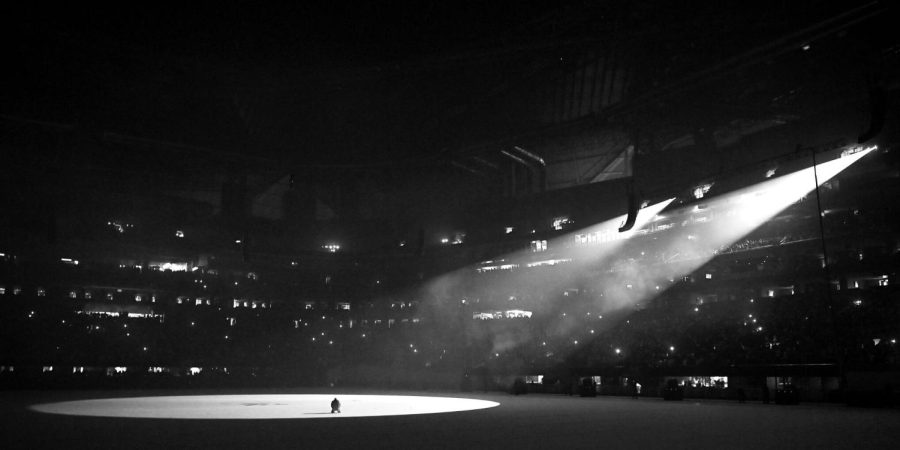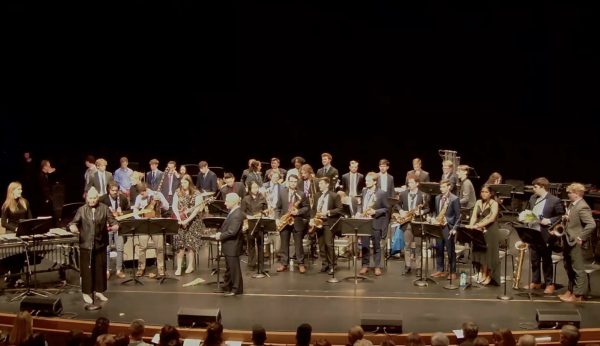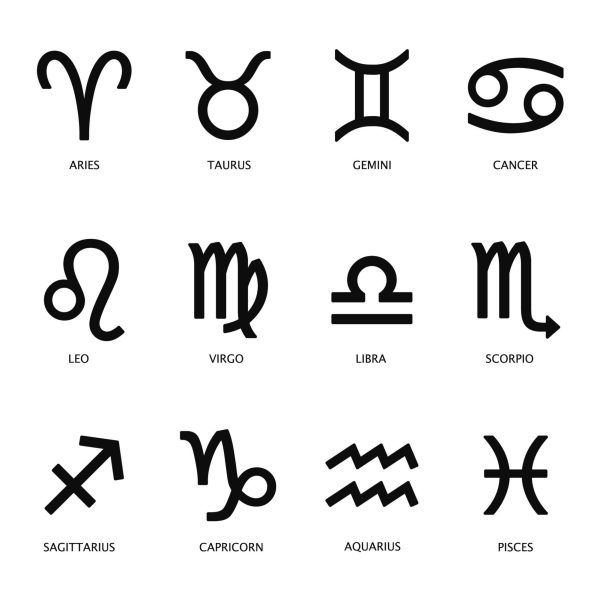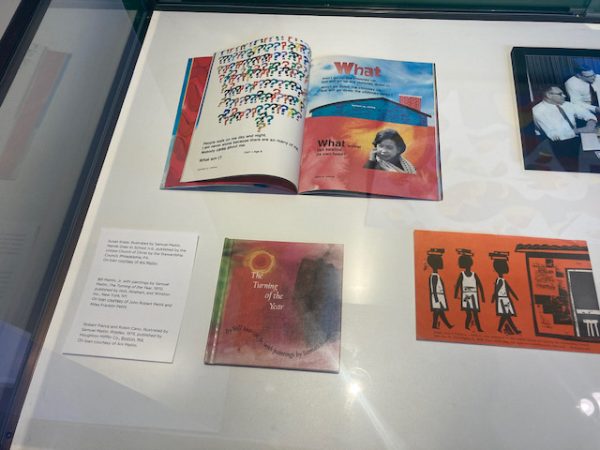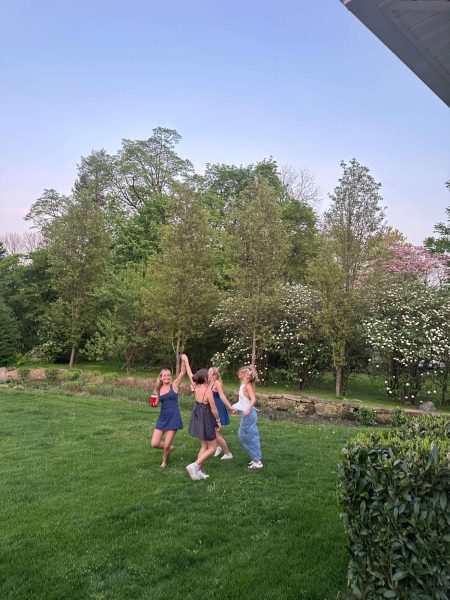Villa-Vogue: Kanye West’s Donda Bridges Fashion and Music
Courtesy of Pitchfork.com/Paras Griffin/Getty Images for Universal Music Group
Kanye continuously changes the fashion game.
September 8, 2021
The correlation between fashion and popular music is one of abundant and mutual creativity. Both forms of art have developed into strong mechanisms of defiance over the years as musicians and designers alike express their beliefs and individuality through their work. While powerful on their own, the two industries have found a way to merge together in recent years, becoming an influential force to reckon with. Who is the ringleader of this merge you may ask? No one but Mr. Yeezy himself.
Kanye West has been a fashion and music moguel since his “The College Dropout” album days. West’s foray in fashion first began with Nike in 2006 when he collaborated with designer Christopher Bevans on an Air Max 180 sneaker, notable for the shoe-brands first non-athlete collaboration. Ever since the release, West’s fashion career grew into an empire and with the blink of an eye, Yeezy was born.
As we fast forward 15 years and nine Yeezy seasons later, West has made a huge mark on the fashion world by rebirthing brands and turning streetwear into high fashion. While Ye is known for his unpredictability, he is always consistent with his fashion motivations and aspirations. These motivations and aspirations not being money, but the opportunity to spread his beliefs through his art. His most recent project being his 10th studio album, “Donda.”
Despite toggling between fashion and music for quite some time, “Donda” is Ye’s most cohesive attempt at bringing the two industries together. Let’s first look at the countless fashion references dropped throughout the songs in “Donda.” While any artist can drop designer name brands in their lyrics, Kanye does so with purpose. For example, his ninth track “Junya” (ft. Playboi Carti) is entirely dedicated to the designer Junya Watanabe, otherwise known as the protege of Comme Des Garçons founder Rei Kawakubo. “Junya” is written as a symbol for West and Carti’s knowledge of the fashion industry and high social status.
In his track “Off the Grid” (ft. Playboi Carti & Fivio Foreign)Kanye makes reference to his shopping spot of choice Dover Street Market. The rest of his songs drop high fashion labels that Ye has connections with such as Burberry and Givenchy.
The most powerful tie between music and fashion “Donda” created; however, was through Kanye’s three live listening parties. Each show revolves around West’s fashion empire and is jam packed with symbolism – so let’s unpack it.
Picture this: You walk into the Mercedes-Benz Stadium, massive ceiling open, with equipment strewn all around the borders of the stadium floor. At the center of the floor is a mock-up of West’s bedroom. Acting as a reference to Vincent Van Gogh’s painting “Bedroom at Arles,” the opening was symbolic to the term “artist’s sleep during extreme times of work,” a term Ye certainly proved correct as his performance unfolded.
Working alongside West was Balenciaga’s creative director Demna Gvasalia. Gvasalia played a huge role in designing the show, as well as creating West’s new line of Donda merchandise. This merch is not to be mistaken with the Belieber t-shirt shoved to the back of your closet (sorry Justin). West’s Donda merchandise serves as an ode to high fashion, adorned with a jersey-style top, a long sleeved shirt, a cropped military jacket and a bulletproof vest. The jersey is a variant inspired by Balenciaga’s AW 21 influenced by Manchester’s United Goalkeeper jersey in 2002. The bulletproof vest perfectly fits into the silhouettes that Demna is known for at Balenciaga. These clunky foreboding symbols are part of the DNA which makes his work so capturing. Bulletproof vests, riot gear, ‘security guard uniforms’ and ill-fitting suits are what Demna thrives on and therefore what West presents.
The main message West tries to convey through fashion and music is anonymity. The designer who inspired West’s admiration for anonymity is Martin Margiela, the founder of the haute-couture house known as Maison. Due to Ye and Demna’s mutual love for and understanding of Margiela’s work, the two were able to create a magnanimous event for the release of the album, an event all centered around anonymity. During his career in the 1990’s, Margiela despised the new fixation of supermodels. Rather than boasting his lines with A-listers, Margiela covered the faces of his models with masks in order for his clothes to speak for themselves – which is exactly what West did at his live performance.
Everyone on stage, including West, had their faces covered in masks. Rather than being a symbol for the pandemic our world is currently facing, West used his face-covering fashion as a way to show fans his appreciation for anonymity. Once known as one of the most talkative celebrities to date, Ye is explaining his newfound admiration for silence by letting the cohesion of his music and fashion speak for themselves.
I could write a novel solely based on the symbolism used in West’s live performances for Donda, but I’ll spare you. The main takeaway is this: music is fashion and fashion is music. The two industries share a symbiotic relationship like no other, and no one correlates the two better than Kanye West. Although it could be a toss up as Ye competes with other music and fashion moguls like Travis Scott, Donda may have just built the bridge between music and fashion. The bond only strengthens from here.
And remember, I love you like Kanye loves Kanye.

